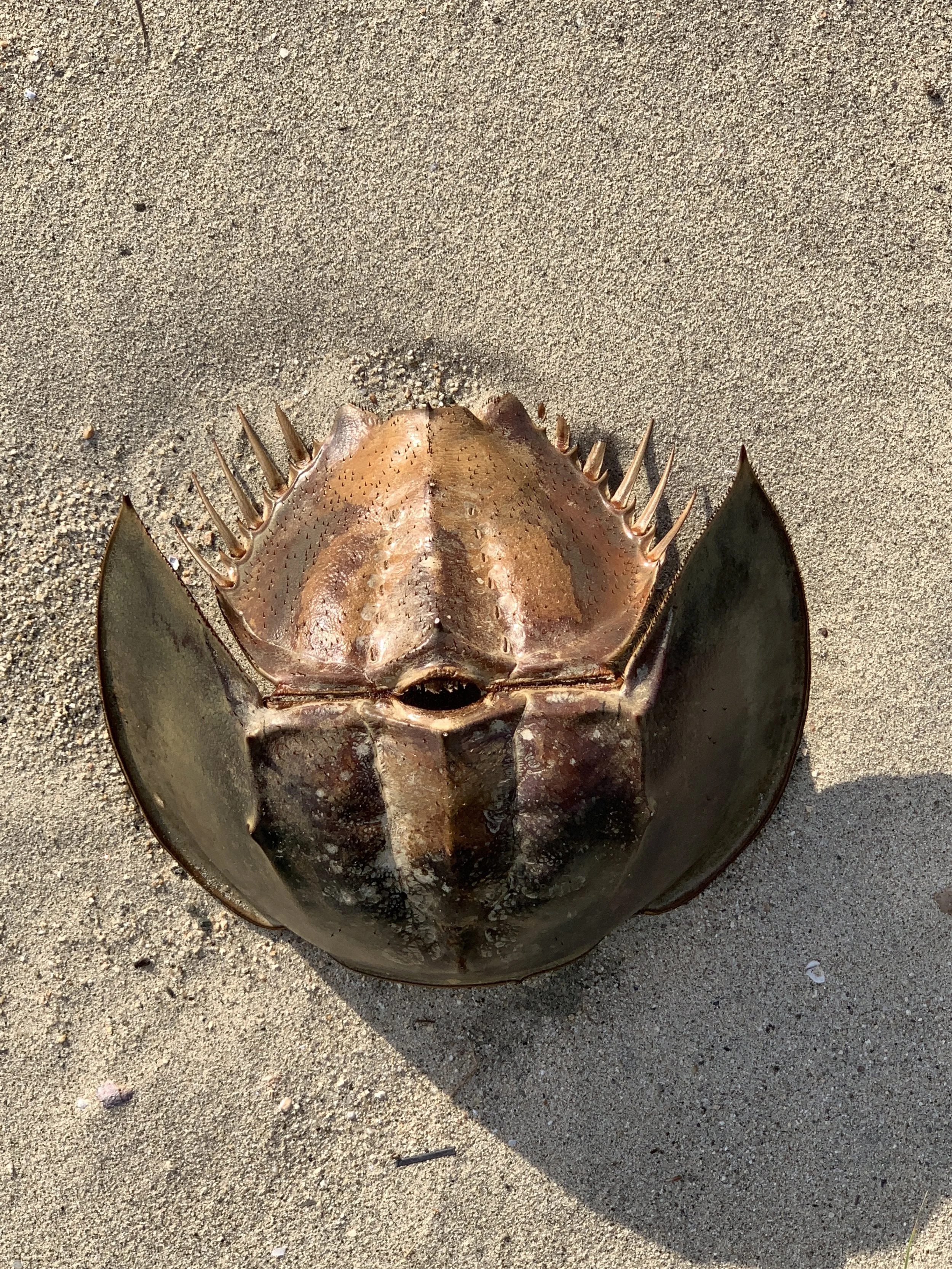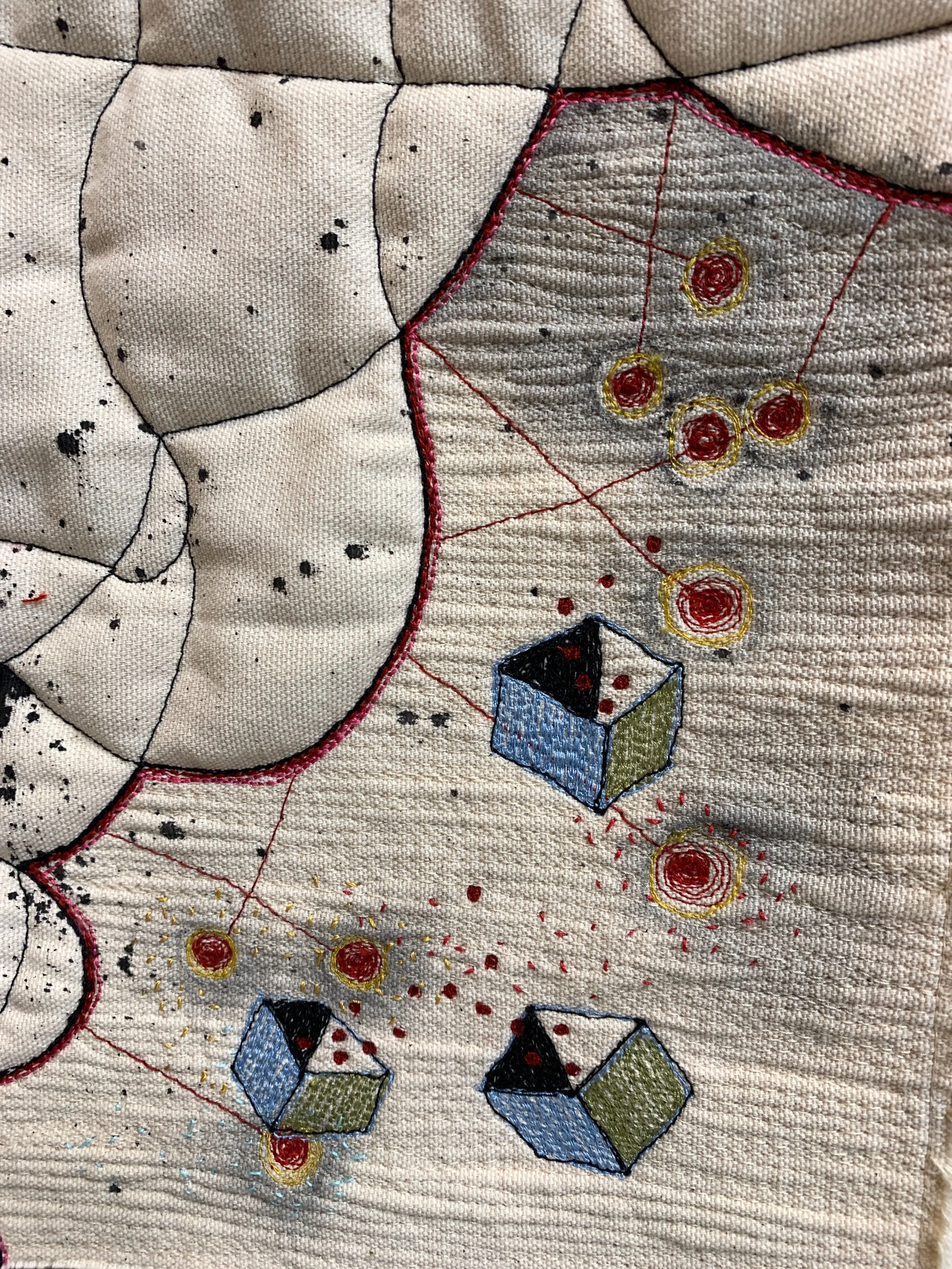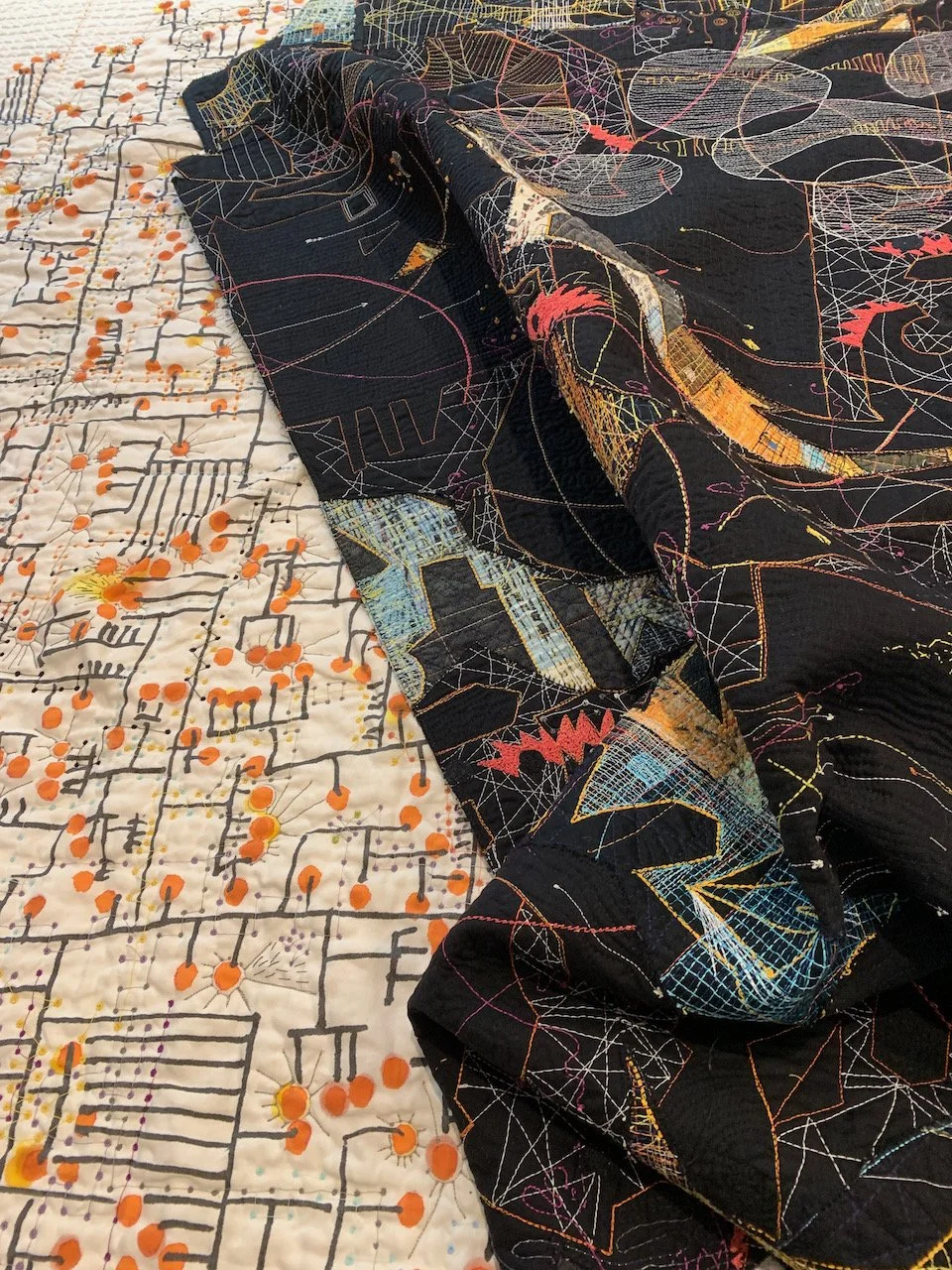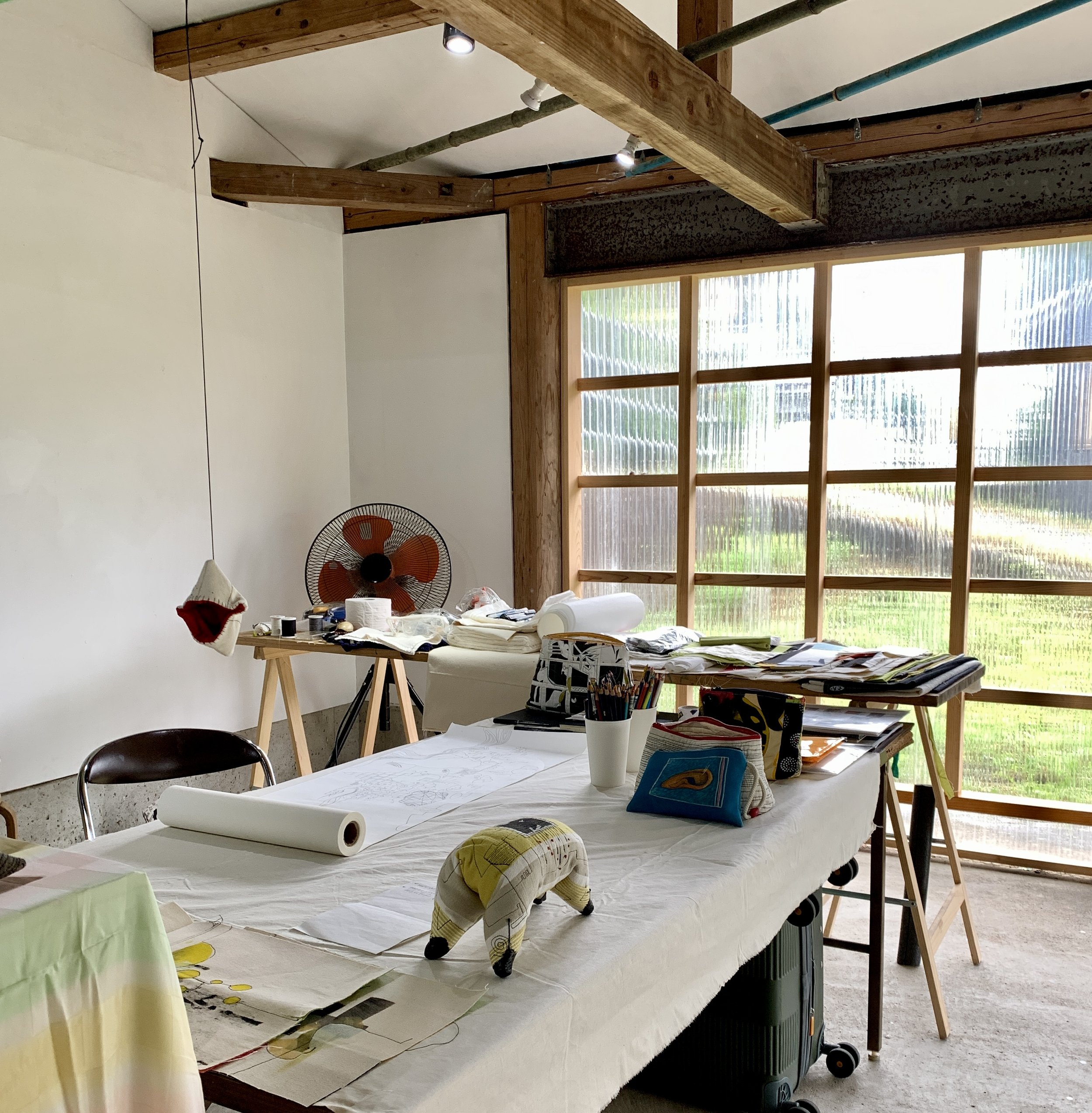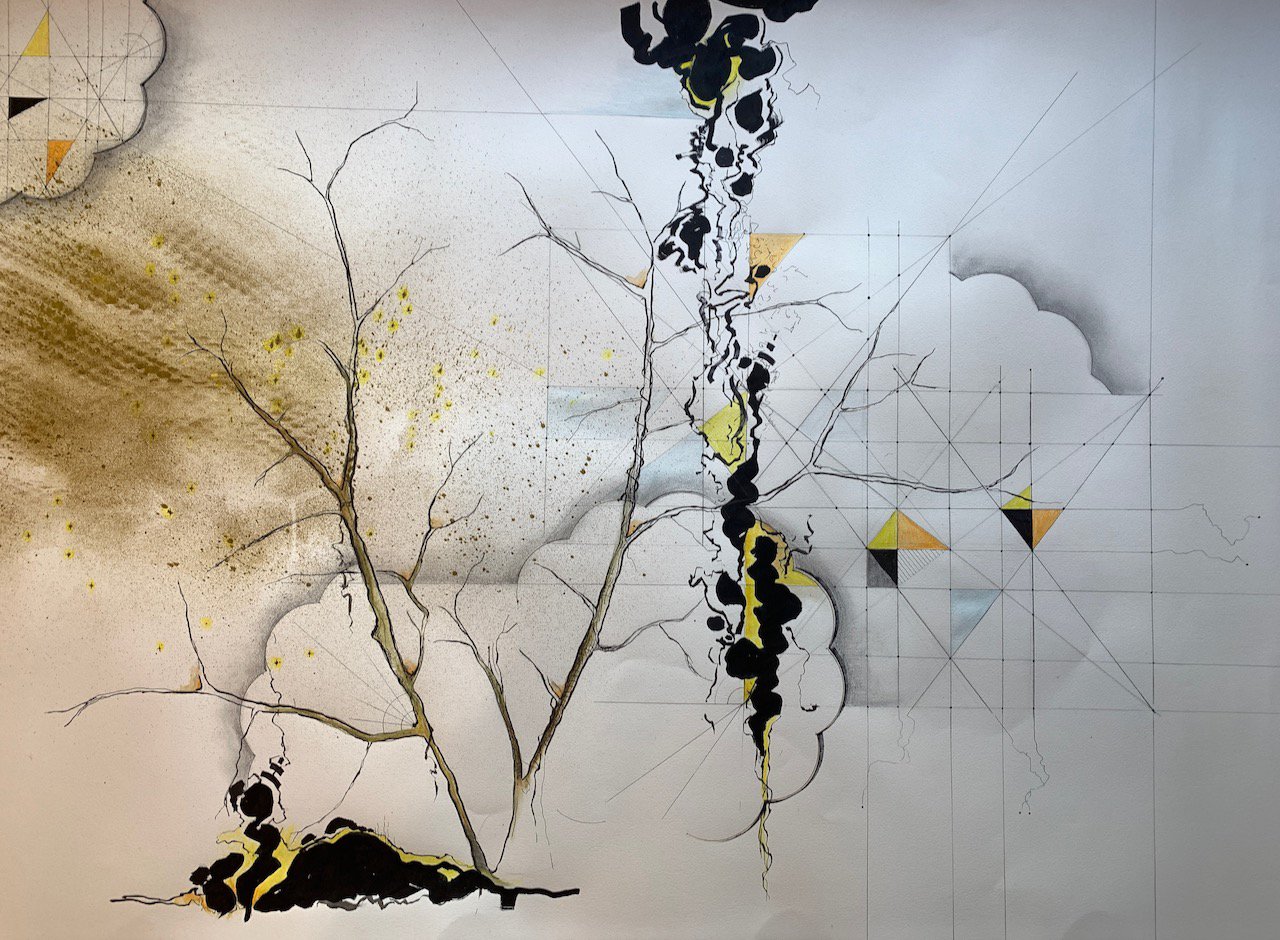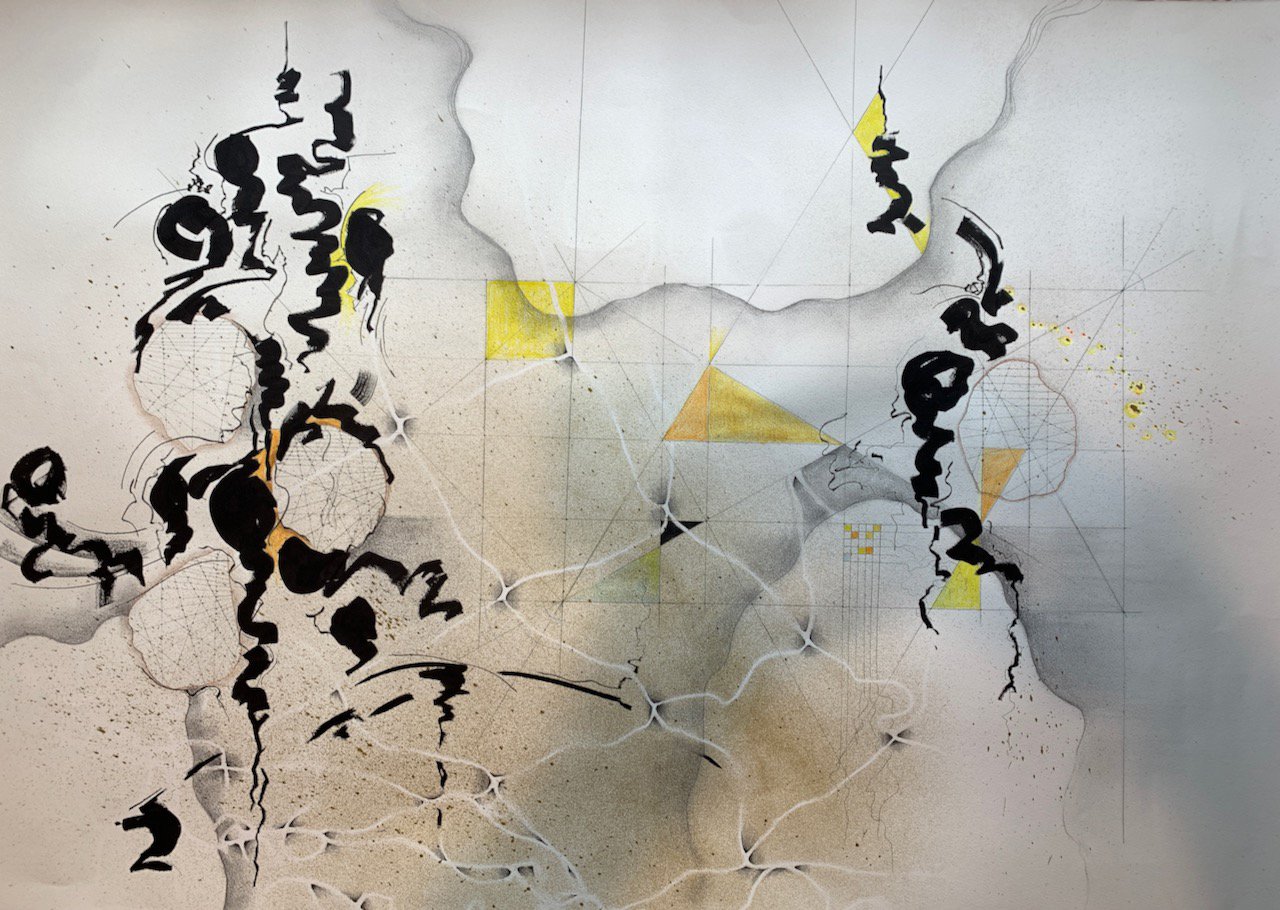And, it worked.
Itoshima, Japan
A month-long residency in a rural area of Japan (Itoshima, Studio:Kura) has challenged, inspired and poked me into uncharted territory. I had hoped that the studio would have a sewing machine that I could use. And they do. But. It is a bit of a nuisance to use it and that blocks me from doing the work that I am most comfortable doing. At first I thought I could conquer any machine. If this one was going to be a brat I would tame it to my ways.
My Studio: Kura studio.
You know when children decide to put on a tantrum show it is best to just walk away until they calm themselves. It was me having the tantrum and I realized that this was the first step to being challenged during my time here. That’s what I did. I stepped away from the machine.
I’ve done some hand stitching with colors that are unfamiliar to my hands.
I’ve done some cut paper experiments based on the principle of Notan.
And I have a 25 ft. long roll of rice paper that I have been drawing on. The drawing is about 8 foot long today and continues to grow. The drawing takes me to another dimension and allows me to think.
A detail shot of the 8 ft long rice paper drawing done at Studio:Kura.
I’m almost halfway through the four week stay in this lovely and inspiring place. I thought I might come up with some grand revelations by now. Maybe tomorrow.
Today the scroll is 8 feet long. How long will it be in November? I am thinking about how time is condensing and life is short. I know that I will not see everything there is to see before my end. My art reflects the thoughts and images I cannot put into words.
This beach is about a block away from my studio. This is all I really need in life—a way to see the beauty of the earth itself. It takes my breath away.







